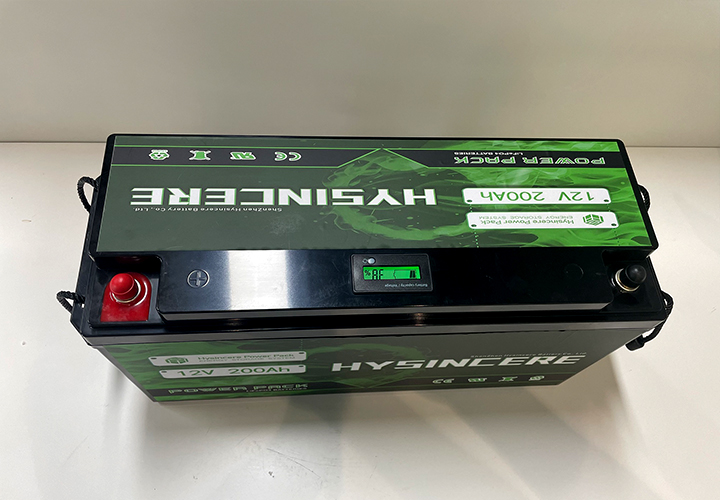source:other news
release time:2023-09-18
Hits:0
Popular:

The application fields of lithium-ion batteries for long-term storage, such as medical, military, and auxiliary power supplies, make it particularly important for batteries to have good long-term storage performance. The interior of lithium-ion batteries is a relatively complex electrochemical system. After being left unused for a long time, the equilibrium state inside gradually changes. When it accumulates to a certain extent, the battery often undergoes the following changes: cobalt acid lithium-ion batteries
1. Physical characteristics
According to the actual evidence of lithium-ion batteries stored for a certain period of time, the physical characteristics (appearance, size, weight, etc.) of the battery will undergo certain changes, especially the appearance characteristics. In situations where the temperature and humidity of the storage environment are poor, this trend is more pronounced.
In cases of high humidity, the weight gain of lithium-ion batteries after long-term storage is significantly higher than that of batteries placed at low humidity. If the steel shell of the battery is prone to rust under high humidity conditions, resulting in a slight increase in mass. Rust will not have an impact on the internal state of the battery, but it will directly affect the shipment of the product and may have a negative impact on its supporting electronic components.
2. Electrochemical characteristics
Long term storage of lithium-ion batteries may result in some side reactions, such as electrolyte decomposition, dissolution of active substances, and lithium deposition. After a long period of shelving, the equilibrium state inside the lithium-ion battery gradually changes. When it accumulates to a certain extent, the battery will undergo significant changes, which will be directly reflected in the electrochemical characteristics of the battery.
1) Capacity
The changes in the capacity of lithium-ion batteries that have been shelved for a long time are mainly reflected in two aspects: firstly, the decrease in battery capacity, mainly caused by self discharge; The second is the increase in irreversible capacity, which mainly depends on the irreversible consumption reactions between the internal chemical systems of the battery. The phenomenon of self discharge is inevitable in all lithium-ion batteries. The capacity loss caused by self discharge can be divided into two categories: reversible and irreversible: reversible refers to the portion of capacity that can be recovered when charging a lithium-ion battery, and irreversible loss refers to the unrecoverable capacity. It is necessary for battery manufacturers and battery users to reduce battery capacity loss after long-term storage.
2) Internal resistance
The internal resistance of a battery refers to the resistance between the positive and negative ends, which is the sum of the resistances of the current collector, electrode active material, separator, electrolyte, conductive handle, and terminal. For lithium-ion batteries, the smaller the internal resistance, the smaller the voltage occupied by the battery during discharge, and the more energy it can output. But for batteries stored for a long time, the resistance often increases with increasing storage time. Exceeding a certain resistance can cause the battery to exceed the benchmark internally, leading to scrapping or degradation. Therefore, it is necessary to pay attention to the changes in resistance during long-term storage of the battery
Read recommendations:
marine battery for trolling motor Processor
LiFePo4 Battery Pack 12V 350Ah
What are the main characteristics of lithium-ion batteries?lithium ion golf cart batteries
What causes an iPhone battery to swell?

Last article:Analysis of the causes and effects of electrode cracking in lithium batteries.lithium trolling motor battery
Next article:Explore the advantages of lithium batteries for mobile phones.portable solar power generator
related suggestion
solar power battery storage wholesale
2023-03-20lithium batteries for boats manufacture
2023-03-20lithium power station manufacturer
2023-03-22lithium batteries for solar panels Manufacturing
2023-03-20solar powered battery pack direct sales
2023-04-0712v deep cycle marine battery
2023-03-20best batteries for off grid solar
2023-05-08lithium golf cart batteries
2023-05-08solar generator amazon
2023-05-08marine battery for trolling motor
2023-05-08portable power station with solar panel
2023-05-08lithium marine batteries
2023-05-08Home Energy Storage System 51.2V 150Ah LiFePo4 Battery Pack
2023-06-1976.8V 105Ah Golf Cart LiFePo4 Battery Pack Waterproof Support CAN RS485 Bluetooth
2025-02-263.7V 702528 500mAh Li Polymer Battery
2025-05-16Sodium Ion Battery Pack 12V 100Ah SIB 2C Discharge
2024-06-2712V 150Ah Rechargeable Lithium Battery for Marine Boat
2023-02-14Lead carbon battery and lithium ion battery on the market which good?
2022-10-26Samsung INR 18650 Batteries: High-Performance Cells for Industrial and Commercial Applications
2025-07-04How to choose FPV batteries?
2023-02-22The Commercial Advantage of Using a 36V Lithium Battery for Trolling Motors
2025-05-2918650 vs 26650 Lithium-Ion Batteries: A Comparative Analysis for Optimal Performance
2025-03-19How to test high power cell?
2022-12-29Introduce the good advantages of using soft pack lithium batteries in work.solar powered battery pack
2023-08-19The development potential of lithium iron phosphate batteries
2023-02-15Special alien battery.deep cycle trolling motor battery Manufacturing
2023-04-07Electric vehicle power battery.marine battery for trolling motor
2023-08-11